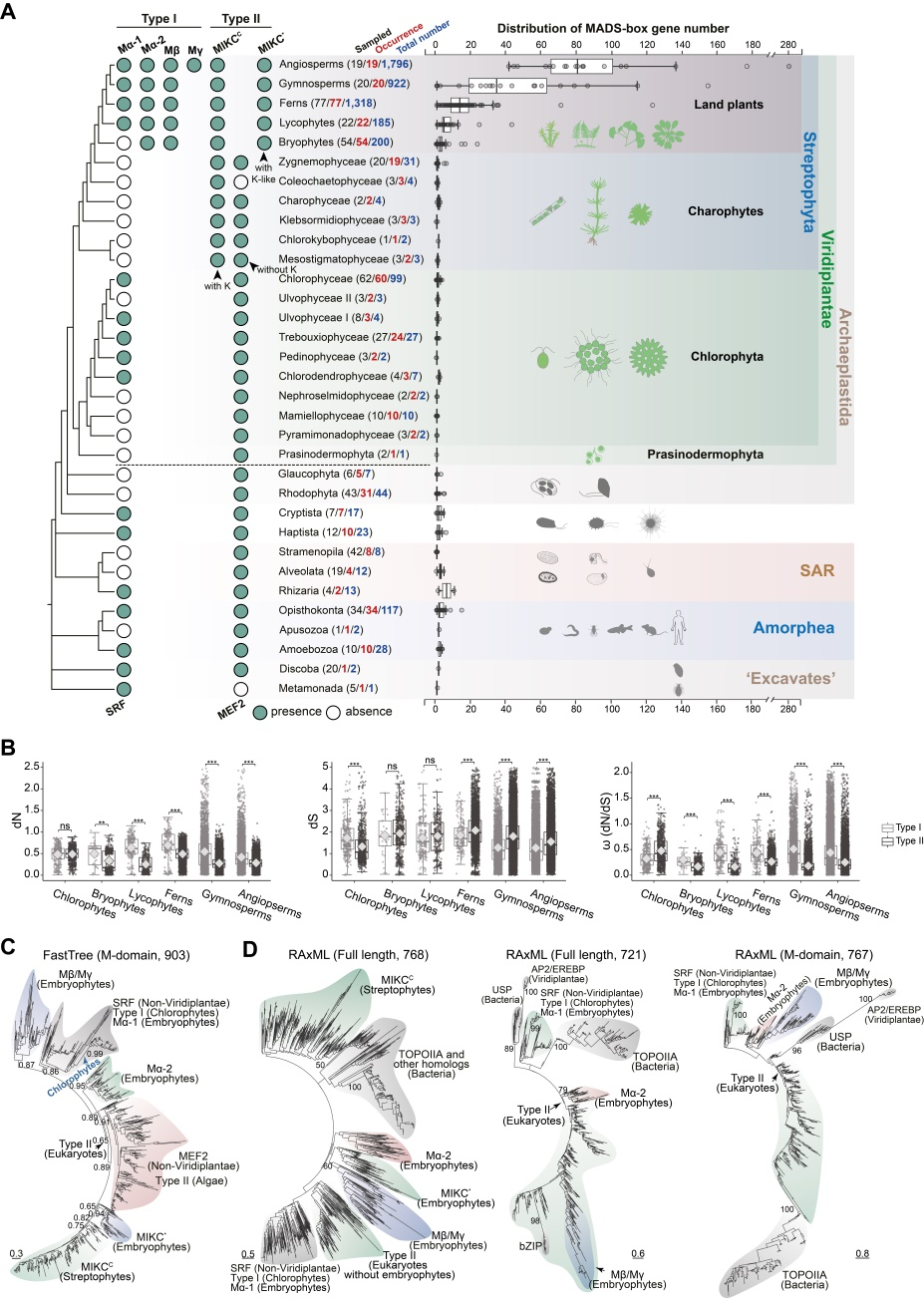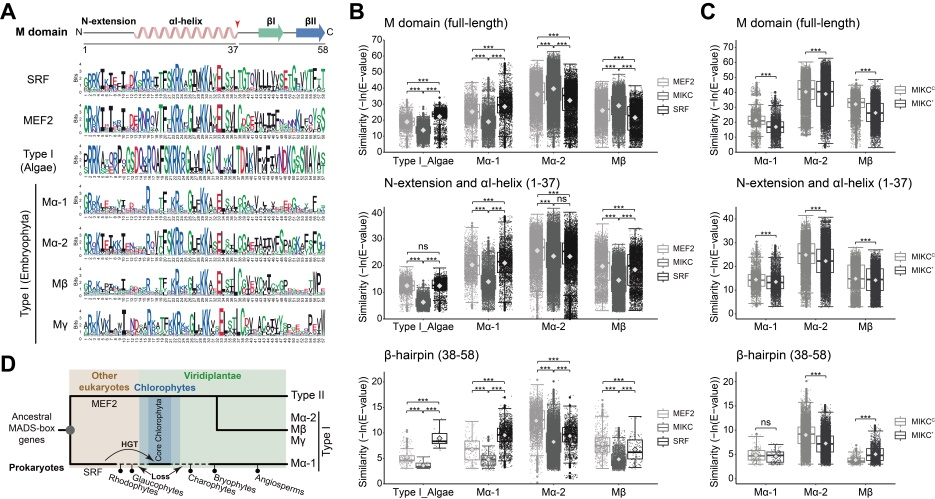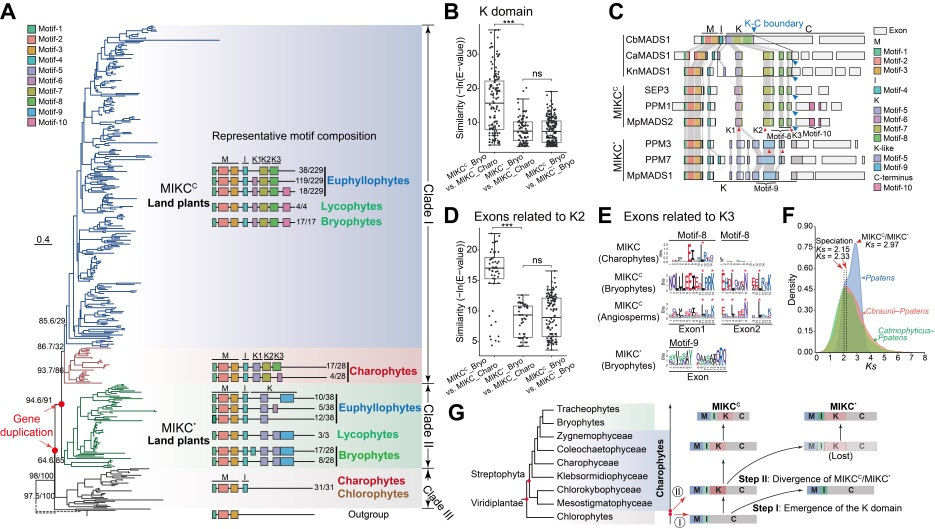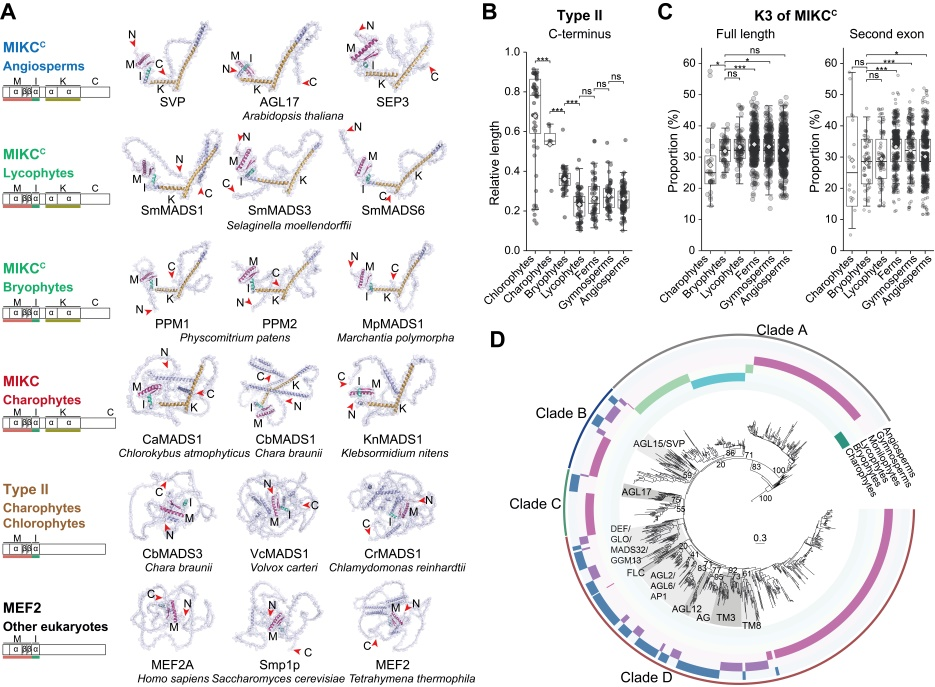Name:WAN Tao
Tell:
Email:wantao@wbgcas.cn
Organization:Wuhan Botanical Garden
Study Unveils the Evolutionary History of MADS-box Genes in Green Plants
2025-09-04
MADS-box genes, critical regulatory elements in eukaryotes, have undergone extensive diversification in green plants. Despite extensively studied, the understanding of their origin and evolution, particularly the relationships between different gene types and their functional diversification, remains incomplete.
Recently, researchers from the Wuhan Botanical Garden of the Chinese Academy of Sciences published a comprehensive study in Plant Communications that clarifies key aspects of MADS-box gene evolution in green plants. By systematically analyzing genomic and transcriptomic data from 551 representative eukaryotes and integrating sequence and protein structural evidence, the team reconstructed the evolutionary history of these vital genes.
This research identified 4899 MADS-box sequences from 445 species. All genes were classified into type I and type II based on their structural characteristics and evolutionary relationships with well-documented MADS-box genes from animals and plants. The results reveal a polyphyletic origin of plant type I genes. Specifically, all type I genes from chlorophytes and a subset of Mα genes from land plants (designated the Mα-1 subgroup) are orthologous to Serum response factor (SRF)-type genes, whereas the remaining Mα genes from land plants (designated the Mα-2 subgroup), all Mβ and Mγ genes from land plants, and all plant type II genes are orthologous to Myocyte enhancer factor-2 (MEF2)-type genes.
Two ancient duplication events were inferred in the stem group of extant streptophytes. The first split type II genes into two groups, followed by a second duplication that produced the two ancestral MIKC gene lineages giving rise to MIKCC and MIKC* genes. Charophyte MIKC genes should be redefined as MIKCCgenes, as they exhibit a closer relationship to land plant MIKCC genes than to MIKC* genes.
Ancestral MIKCC proteins possessed sphere-like architectures with long coils associated with physical constraints to tetramerization. The architectures of MIKCC proteins have evolved greatly in land plants, involving significantly shortened C-termini, in which key domains are fully exposed, a structural necessity for tetramer formation. The enrichment of hydrophobic residues in the K3 subdomain of MIKCC proteins, especially in ferns, suggests a potential evolutionary adaptation related to the diversification of MIKCC oligomerization in land plants.
Phylogenetic analyses further revealed that four main clades of MIKCCgenes have already been established in the common ancestor of ferns and seed plants, potentially serving as the raw genetic basis for their functional diversity in seed plants.
Overall, these findings elucidate the polyphyletic origin of plant type I genes, document an early duplication in the stem group of streptophytes leading to MIKCC and MIKC*, and outline the stepwise evolution underpinning the functional diversity of MIKCC genes in seed plants.
This research was supported by the National Natural Science Foundation of China and the Sino-Africa Joint Research Center.

The presence and phylogenetic relationships of MADS-box genes in eukaryotes (Image by WBG)

Polyphyletic origin of type I genes in green plants (Image by WBG)

Early evolution of type II genes in land plants (Image by WBG)

The stepwise evolution of MIKCC genes in land plants (Image by WBG)